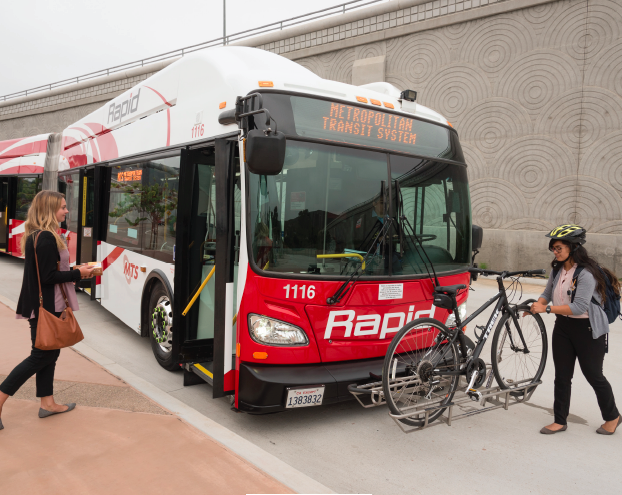Safe streets advocates at Circulate San Diego hosted a "Lunch&Learn" webinar this week to discuss the Draft 2021 Regional Transportation Plan released by the San Diego Association of Government (SANDAG).
Their report, "SANDAG Reboot," summarizes the Draft 2021 Regional Plan, the first RTP released since SANDAG was sued for inadequate environmental analysis on previous versions. Also since that time, A.B. 805 forced a power shift on the SANDAG board, better balancing suburban interests and heavily populated central areas, and a new director, Hassan Ikhrata, came on board.
The key takeaway from CirculateSD's analysis is that the plan reflects a big shift in priorities away from highway expansion and towards more sustainable modes of transportation.
The draft plan in fact proposes no expansions of highway right-of-way at all, except for a network of "managed lanes" for carpools, buses, and drivers who pay tolls. In fact, unlike other regions that are adding these types of lanes to their network, SANDAG proposes mostly converting existing travel lanes to managed lanes, rather than widening highways or adding new lanes.
CirculateSD's analysis focuses mostly on the near-term improvements proposed in the plan, which are more likely to come about because funding for them is mostly already in place. In particular, they laud the new timeline for expanding and increasing transit service, which is much faster than the 2015 plan.
The upgrade to bus and trolley frequency is "robust," according to CirculateSD: over 2/3 of local bus routes would see upgrades - mostly frequency improvements - by 2025, and new Rapid and local bus routes are planned; by 2035, another ten rapid routes would be upgraded.
Bus service would also benefit from faster travel times with the creation of a managed lane network on all the major freeways in the region. Note that such a large-scale conversion of existing lanes to managed lanes would be unprecedented in California.
For active transportation, the plan includes over 120 projects, broken up into phases. The near-term ones (planned by 2025) include ten that are mostly completing existing bike lanes and filling in gaps. In the mid-term - by 2035 - about 55 projects are planned, to build out the central San Diego bikeway network as well as a coastal rail trail.
"There's a lot to like in the plan," said Colin Parent, Executive Director of CirculateSD. But, he warned, "it includes a lot of things that seem very optimistic in terms of revenue and political liability."
That is, the mid-term and long-term projects proposed in the plan - which include a major extension of the Purple Line, a transit connection to the airport and a planned "Central Mobility Hub" - rely on funding sources that are far from certain.
The draft plan proposes that the managed lane network would "pay for itself in tolls," for example. Some of the projects would also rely on a potential new transportation sales tax measure, which would have to be passed by voters.
But it also relies heavily on one untested idea: to add a regional charge to a state road user charge. One problem with this is that there is no state road user charge. A pilot is being tested, and argued about, and while some say that a road user charge is inevitable because the gas tax is inadequate and shrinking, it is still a controversial idea with a lot of political uncertainty.
Further uncertainty comes from San Diego - or anywhere - not having the authority to tack on its own additional regional charge.
The plan estimates $60 billion in revenue from such a charge would fund the larger long-term projects, with half of that from the state and half from San Diego. It's not clear where that estimate came from or whether it is credible, even aside from the political uncertainty.
Given that SANDAG overestimated the amount of money it would collect from a previous sales tax measure - and got in trouble for it - "there's every reason to be wary of overly optimistic revenue estimates," as Parent put it.
"We want to think big," said Parent, praising the ambitious plan. "But there's also the worry that, by being too rosy and optimistic, and not basing plans on reality, you get into a situation where you start planning projects that you can't afford to build. Then you just spin your wheels, and you can't help people."
The 2021 Draft RTP should be presented to the SANDAG board in December. There is sure to be a lot of discussion, and there may be changes made to it before it is adopted sometime early next year.






